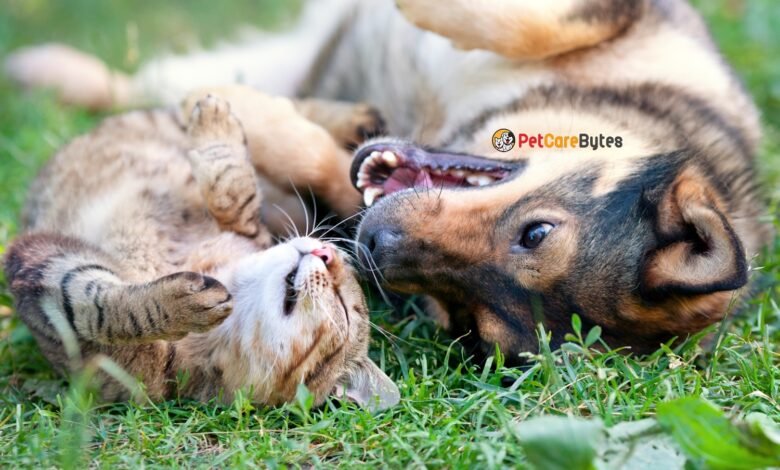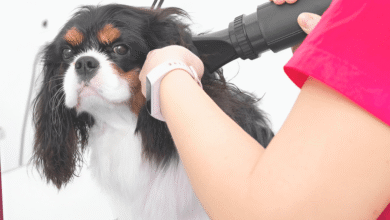
Summer Pet Safety Checklist
As you and your pets enjoy all the fun and relaxation summer offers, we want to help you ensure your pet’s safety this summer with our Summer Pet Safety Checklist.
Make sure your pet stays hydrated.
Your pet should always have access to fresh water, which is especially important in the summer. If a pet doesn’t have a bowl, it might look for water in a puddle or pond, which can have viruses like leptospirosis or blue-green algae that can kill.
Make sure the ground is not too hot for your pet.
If walking barefoot on asphalt is uncomfortable, it’s also painful for your pet. During the summer, if you have to walk your pet on concrete or asphalt, do it early in the morning or at dusk when the surface is more excellent.
Try the five-second rule before you leave. Put the back of your hand on the surface you’ll be walking your pet on. If it hurts to keep your hand there for 5 seconds, it’s too hot for your pet.
Invest in a doggy life vest.
Talking about pools and water is an excellent way for your pet to cool off, but not all dogs know how to swim. Your dog should wear a life vest that fits nicely around the pool and especially when you go out on a boat. It can save a person’s life.
Protect your pet from fleas and ticks.
Parasites!! Yeah, I said it! No one likes fleas or ticks. Not only can they make you and your pets sick, but they can also cause you to itch, get rashes, and get sores. Here, it’s better to be on the attack. Make sure to protect your pet from fleas and ticks all year long. You’ll thank me in the end.
Protect your pet from mosquitos.
Let’s not forget that mosquito is our friend. Heartworm disease is spread to your dog by mosquitoes. Again, the best way to deal with this is to be on the offensive. Please give your pet heartworm medicine all year long.
Some products will keep mosquitoes away from dogs, but that doesn’t mean you shouldn’t provide them with the treatment to prevent heartworms. It’s just another way to keep your pet safety.
Protect your pet from flies.
Let’s talk about fly strikes while we’re talking about bugs. I know it isn’t lovely, yes. This is when your dog likes to spend a lot of time outside, and those nasty biting flies start biting and sucking blood from your dog, usually at the tip of the ears, causing crusts, scabs, and sores that ooze.
The best medicine is to avoid getting sick. If it’s flu season, keep your pets inside as much as possible. Some medicines are safe for pets that you can put on your dog to keep the bugs from biting. Medicines are best for pet safety.
Read More: How to Keep your Rabbits Cool in Summer
Protect your pet from maggots.
Grubs are the next thing that comes after flies. Yes, you did read it right. In a wound on the skin, flies lay these eggs. When they hatch, they turn into larvae that eat your pet and can cause a severe infection that could kill your pet. This usually happens to long-haired dogs with much poop on their fur, generally because of diarrhea. If your pet has loose stools, take it to the vet and do not leave it outside.
Don’t shave your pet for the summer.
Do not shave your pet since they have long hair.
You need to groom your pet to prevent mats, knots, and sores, but you don’t need to shave it in the summer to keep it cool. Ensure your pet is brushed out before summer so the thick undercoat falls on its own. This lets your pet keep its hair and stay calm.
The fur or hair of an animal also blocks the sun. Your dog could get sunburned if it doesn’t have this protection. What happens after you get sunburned? Cancer of the skin. Nobody would want that. Again, preventing problems is the key.
Protect your pet against heatstroke.
The last thing is heatstroke. Your pet is more likely to get heatstroke if old or young.
Pets need to have a place to go where they can cool off. If a pet is too hot, it will naturally look for a more relaxed position, like digging a hole in the cool dirt under a tree. Never, ever, ever leave your pet in the bright sun for a long time.
Even if the windows are cracked, you should never leave your dog in the car briefly on a warm or hot day. Within a few minutes, the temperature inside a vehicle rises dramatically, making it a dangerous place for your pet to be.








2 Comments